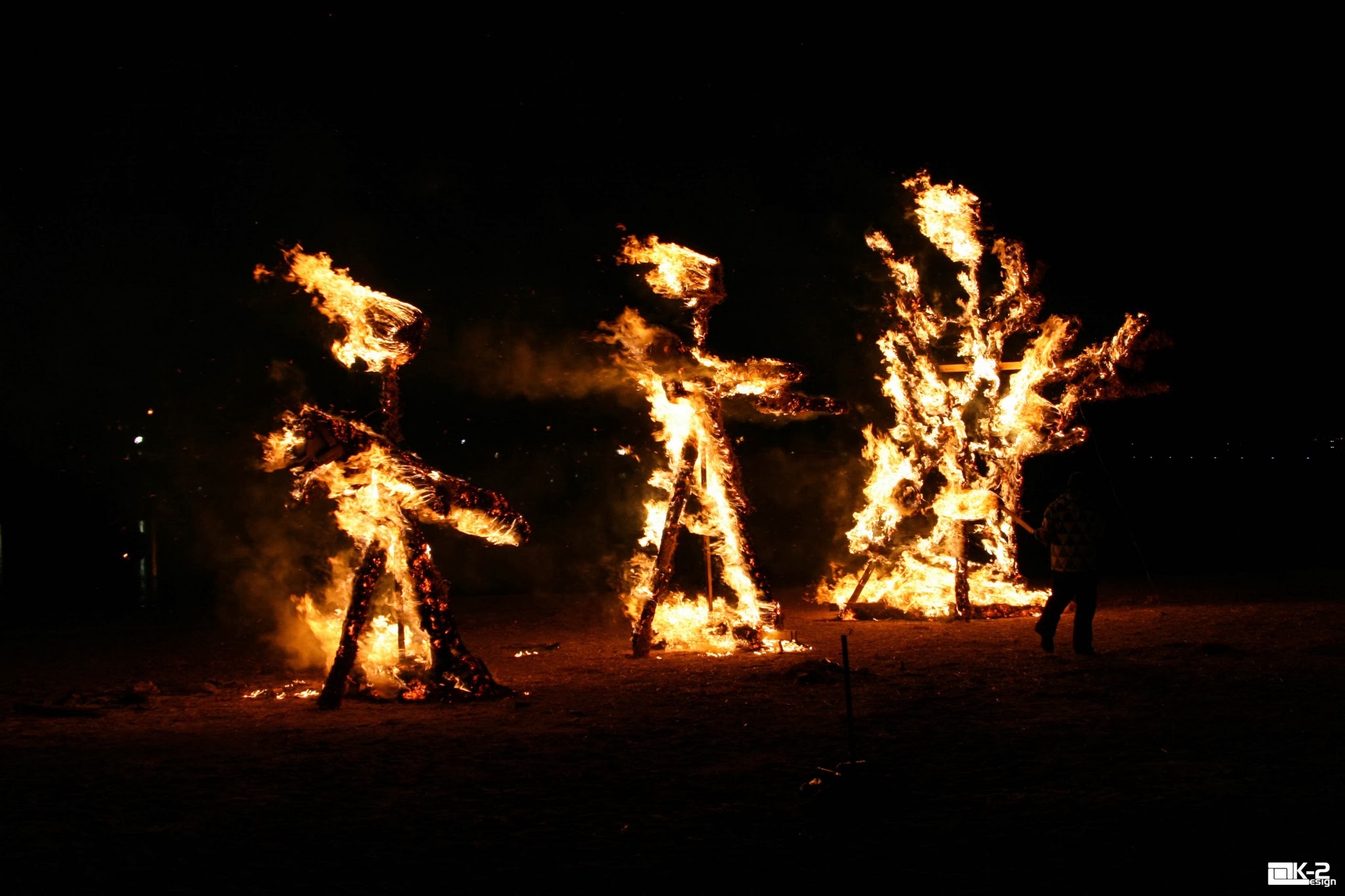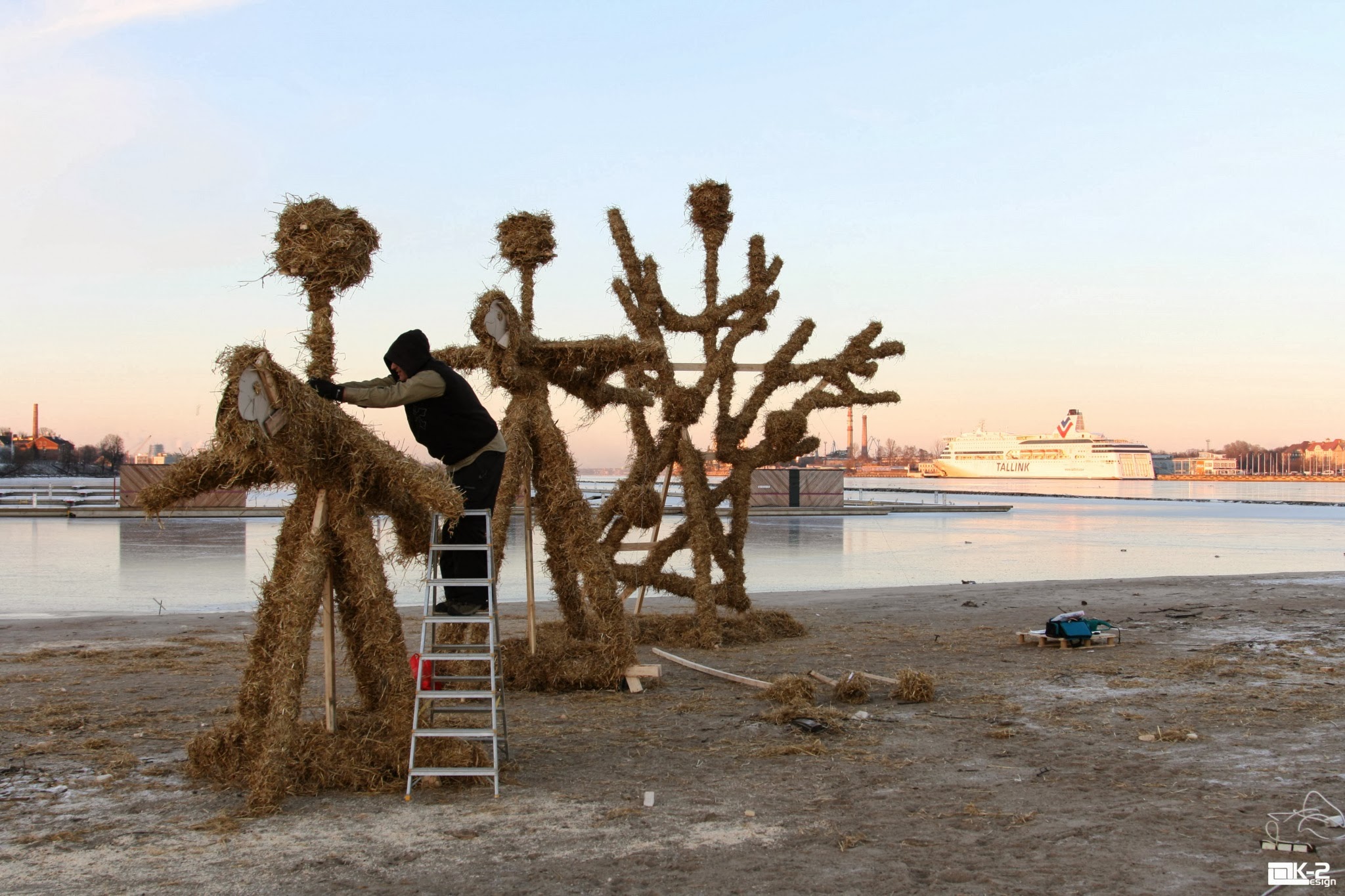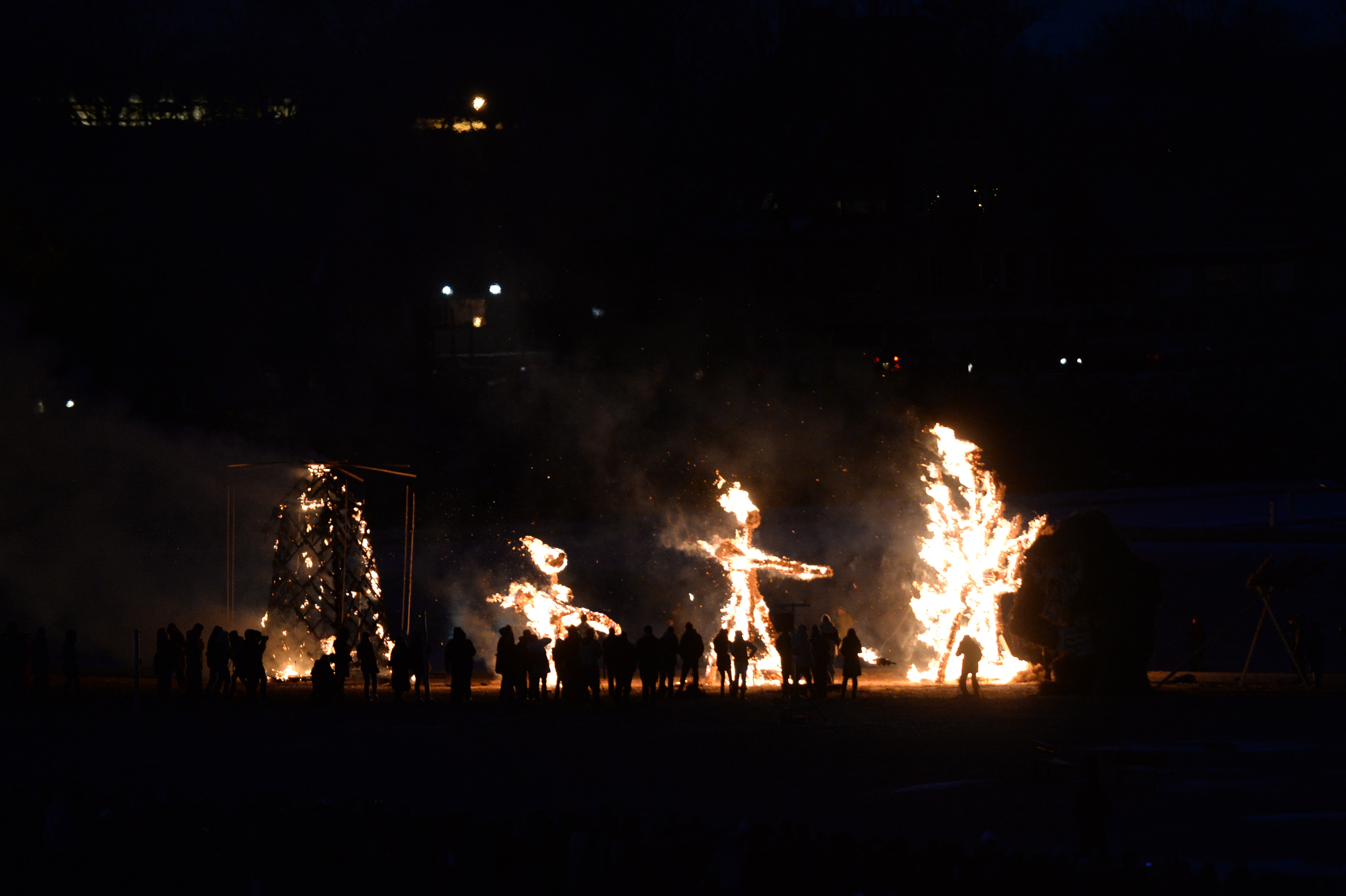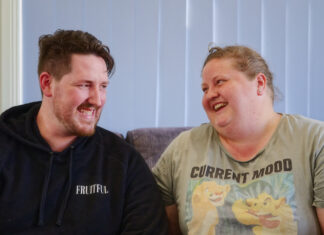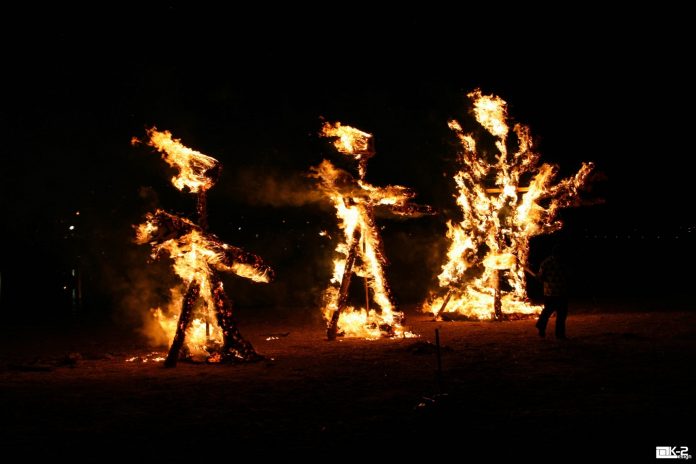
Working with frozen water would seem a natural if your name is Viktor Cebergs, only one letter away from icebergs. But for Geelong’s own international artist, sculpting with fire was a fresh experience, he told JOHN VAN KLAVEREN.
………………
IT WAS like writing with fire in the night sky.
Viktor watched the flames lick upwards as they wreathed around the timber and straw figures he had finished erecting only hours earlier, creating shapes and forms he could only have imagined.
To his artist’s eye the simple structures took on a life of their own, becoming animated by the energy released in the blaze as the flames reached for the stars.
There was no Southern Cross in that northern sky but it was aptly depicted in the sculpture, with the stars suspended in a ghost gum tree and its faithful pointers carried by a pair of sulphur-crested cockatoos.
The sculpture told the indigenous creation story of Bundjil, a sky god who takes the form of an eagle and the significance of the Southern Cross to the peoples of the Kulin Nation.
Viktor and his architect father Janis were invited to participate in the finals of the World Fire Sculpture Championships in Riga, Latvia, in January this year.
“It was like fire theatre,” Viktor recalled.
It was a very Australian story to bring to a very un-Australian place, but it nevertheless represented a strange merging of cultures for Viktor.
Geelong born and bred, Latvia is his father’s homeland, so for Janis it presented a homecoming, showing his son the history, culture and beauty of the Baltic.
“Riga is a beautiful place and it was amazing to experience the old traditions of the fire sculpting. Dad became a bit of a media celebrity as well, being unusual in that he was part of the Australian team but with a Latvian background,” Viktor smiled.
Working on the ice-bound banks of the River Daugava brought together the extremes of fire and ice, adding an extra layer of meaning to the works.
Sculpting on ice put Viktor on more familiar ground, having trekked twice to well inside the Arctic Circle to be part of a team building the ice hotel in Kiruna, Sweden.
This unique projects involves several artists, electricians and engineers getting together annually during the coldest part of the year to cut blocks of ice from the frozen Torne River to build rooms, furniture and fittings for the hotel’s rooms, foyer and bar, festooned with spectacular LED lighting effects. Each spring it melts away, to be built anew the following year.
It was while working with a fellow ice hotel artist, Gunnar Nilsson, while sculpting pieces for a garden setting in New York that Viktor first heard of the fire sculpture competition.
“Gunnar was also the head judge for the fire sculpting championships and he recommended me for the event,” Viktor explained.
“I had fired a sculpture once before, during the UCI world cycling championships in Geelong. I worked with two other artists, Glenn Romanis and Mark Trinham, to create – ironically enough – a representation of the constellation of the Southern Cross.
“It wasn’t intended to be a fire sculpture but it was on the banks of the Barwon and had to be removed once the event was over. Plus it needed something dramatic so we ended up firing it.”
Working with a variety of timbers is Viktor’s forte, with a number of public art installations around the region created under the buzz of his chainsaw.
Tall and strapping, he could be the archetypal lumberjack as he takes two tonne trunks and fashions them into striking representations that fit beautifully into their natural habitat. But he works extensively in metal as part of a diverse range of materials, depending on the project.
As a self-termed public artist, Viktor takes on large scale projects, often on government, council or corporate commissions, involving developing a brief for the work as well as permit and OHS issues to solve before the actual artwork is even attempted.
He operates Site Specific Art, a name derived from the concept that public art works best when it fits with its natural environment.
“The design of each piece depends on how it interacts with its natural and built environment. The art should be part of the space rather than dominating it. That way it can interact with the viewer and stimulate thoughts about the place,” Viktor explained.
While his large scale projects are designed to stand the test of time, the life of a fire sculpture is short, created to generate their greatest beauty time while burning, sometimes for as little as 10 minutes.
Viktor and Janis were the only southern hemisphere representatives among the teams of professional sculptors from 12 countries including USA, France, Estonia, Russia, Latvia, Great Britain, Lithuania, Finland, Spain, Switzerland and Sweden.
The fire sculpture championships were part of a wider program of arts and cultural events across the city. They were given three days to build wooden structures up to six metres in height.
All 12 sculptures were lit in turn to a background music and light show using large wooden torches passed along from team to team.
“It gave me an appreciation for different raw materials. All the teams came up with magnificent outcomes. It was just so exciting and spectacular. It was amazing experience to be part of.”


